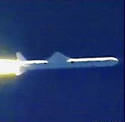
Image credit: NASA
A Pegasus XL rocket successfully launched NASA’s SORCE satellite on Saturday afternoon. The Pegasus was released from its Stargazer L-1011 carrier aircraft at an altitude of nearly 12,000 metres, and it then ignited and flew the satellite into orbit. SORCE contains five instruments designed to observe the Sun.
NASA’s Solar Radiation and Climate Experiment (SORCE) successfully launched Saturday aboard a Pegasus XL rocket.
“Saturday’s successful launch adds to our constellation of Earth-viewing satellites that help us to understand and protect our home planet,” said Dr. Ghassem Asrar, NASA’s Associate Administrator for Earth Sciences, Washington.
“We are all tremendously excited about whatby what we will learn about the solar climate connection from SORCE,” said Bill Ochs, SORCE Project Manager at NASA’s Goddard Space Flight Center in Greenbelt, Md. “We’re very proud of the mission team led by the University of Colorado and supported by Orbital Sciences Corporation. This mission is a great example of how NASA, universities, and industry can partner to create successful missions.”
Over the next few days, the mission team will ensure the spacecraft is functioning properly. The SORCE science instruments will then be turned on and their health verified. Approximately 21 days after launch, the instruments will start science data collection, and calibration will begin. Once in its final orbital position, SORCE will be approximately 397 miles (640 kilometers) above the Earth it will study the sun’s influence on the Earth. It will measure how the sun affects the ozone layer, atmospheric circulation, clouds and oceans.
This mission is a joint partnership between NASA and the University of Colorado’s Laboratory for Atmospheric and Space Physics in Boulder, Colorado. The mission is a principal investigator led mission with NASA providing management and scientific oversight and engineering support. Scientists and engineers at the University of Colorado designed, built, calibrated, and tested the four science instruments on the spacecraft.
The University subcontracted with Orbital Sciences Corporation for the spacecraft and observatory integration and testing. The Mission Operations Center and the Science Operations Center are both operated at the University. The University will operate the spacecraft over its five-year mission life and is responsible for the acquisition, management, processing, and distribution of the science data.
Original Source: NASA News Release
